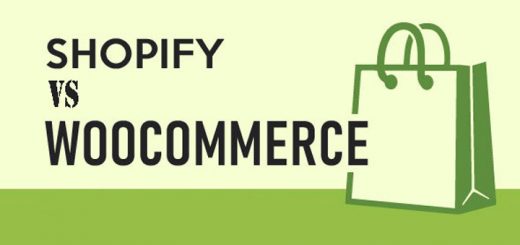5 steps to a successful online store launch
Ready to open your online store?
With all the excitement for the official launch, it’s important that you take time to map out your plan. You want to be ready to serve customers on day 1 (with little or no issues).
Everything won’t be perfect, but the key is to keep pushing forward. Listen to Entrepreneur contributor Jonathan Long’s advice:
“Do not wait until you think it is perfect to launch. You are going to need to constantly split-test and make changes—it’s never going to be perfect…Don’t let excuses or fear get in your way—you are never going to know if you have a viable online business unless you launch.”
A strategy can help remove fear and doubt before launch day. Here’s our 5-step plan to assist you.
1. Optimize Your Product Descriptions
In the e-commerce business, the website is the foundation for your brand. And similar to a house, a weak foundation can result in problems in the future.
That’s why it’s vital for you to optimize your website from the start. This process includes everything from web hosting to branding to technical search engine optimization.
There’s a lot to consider. Think about how easily a potential customer can access your navigation bar or what keyword phrases will help you rank on page one of Google.
With the growing number of mobile consumers, you’ll also want to configure your site for smartphones and tablets. A few small changes can make the shopping experience better.
Product descriptions are often overlooked when launching online stores. The content should provide all the product details with an image.
Here’s an example below from TJ Maxx. From a price to social share buttons, shoppers receive all the necessary information to make their purchasing decisions.

Before you dazzle up your store, figure how you can enhance the site for your consumers. Every tweak gets you closer to a sale.
2. Know Your Shipping Strategy
Most e-commerce stores sell physical products. If that’s your business, you need to ponder how you will deliver those products to your customers.
Shipping is a big deal in business. From a brand’s perspective, you want the lowest costs to get items from point A to point B. Customers want their products to arrive at their doorsteps as soon as possible.
These dilemmas leave very few options for e-commerce brands. For instance, you might have to offer free shipping to your shoppers.
“Most customers not only want free shipping, they expect it. For this reason it can be difficult to sell a product with a hefty shipping fee. Many online retailers combat this by including the cost of shipping into the price tag while raising the price and offering ‘free shipping’,” writes Forbes contributor Brent Gleeson.
Build a shipping strategy that ensures everyone involved gets what they desire. Answer the following questions:
- What courier will ship your products?
- What are the rates for your selected courier?
- Will you fulfill international orders?
- Will you purchase shipping insurance?
- How will you keep track of your shipping costs?
- What’s your shipping policy for refunds?
The more details you provide upfront, the better your strategy. You don’t want to be guessing what to do next when customers start buying your products.
3. Build Your Email List
While many industry leaders may declare that email marketing holds no significance, it’s still one of the best ways to communicate with potential buyers and longtime customers.
Communication is essential in the customer relationship. Email offers you the chance to inform consumers about your latest products and confirm shipments of their most recent orders.
Plus, on-the-go consumers can use their smart devices to check their emails. This access can help you become part of your buyer’s everyday tasks.
But before you jump into all the complexities of email marketing, like segmentation and user profiling, your brand can start with the basic content—the welcome email.
This email is the first greeting a consumer will receive for signing up for your newsletter. It’s the friendly introduction to your brand.
Take a few tips from Urbanears below. Their welcome email gives the purpose of their newsletter and what consumers can expect to receive. The 10% coupon code doesn’t hurt either!

When creating your welcome email, you may want to include a small incentive, too. And don’t forget to add your branding to the message, like your logo or brand colors.
Email marketing isn’t dead. You can take advantage of the benefits with a simple newsletter.
4. Gain Pre-Launch Feedback
Like anything in life, you benefit when people lend you their expertise. Listening to others can provide insight on how to iron out launch issues.
If possible, join a community of e-commerce store owners. You can learn from their mistakes and pick up a few pointers to improve your store.
Think outside the box when finding communities. You may have to join multiple Slack groups or sit down face-to-face with folks in your local area. Prepare to ask specific questions and offer your skill set to others.
Initiating a beta consumer group also is an effective way to get feedback before your launch. That way, you get real-life scenarios of what’s working (and not working) in your store.
“E-commerce companies should aim to create quick and cost-effective prototypes which they can share with potential customers. Beta users can then offer feedback that will help reinvent your product so that it better meets their needs,” states Danny Wong, entrepreneur, marketer, and writer.
Ask your beta users to navigate through your website and report any challenges that arise. You’ll also want to know if the products resonate with them.
Of course, you want to give an incentive to your beta testers. Their honest feedback will only improve your launch.
From communities to beta consumers, find ways to get feedback about your store. Then, make the changes quickly.
5. Develop Your Promotion Strategy
Brand-new e-commerce stores face a heavy burden when it comes to promoting their businesses. While you’re offering an amazing product, people must know you exist.
Promotion starts with knowing your audience. By learning who they are, you gain knowledge on where and how they consume information.
For example, if you’re selling puppy accessories, you may find out they read a unique magazine tailored to dog owners. Then, you may want to purchase ads on the magazine’s site to connect with the audience.
There’s a wide variety of promotional channels. You can begin with Facebook ads, strategic partnerships, or social media posts.
Old Navy promotes their products with the help of influencers on Twitter. This tweet sets the tone of the brand with a call to action.

Focus your promotional strategy on the consumer. It’s the time to show them why your brand deserves their attention.
What separates you from the competition? How do your products solve their problems?
Learn more about your customers to succeed with promotion. You’ll have the intel to attract and maintain their loyalty.
Launch Your Store Today
Preparing for your launch day will help you move past any fears holding you back. With a strategy, you can make the customer experience better.
Remember to optimize your product pages to convert visitors into buyers. Place email opt-ins around your site to capture window shoppers. And consider doing a beta launch to gain feedback.
Plan. Then, launch!
Source Hostgator’s Blog








